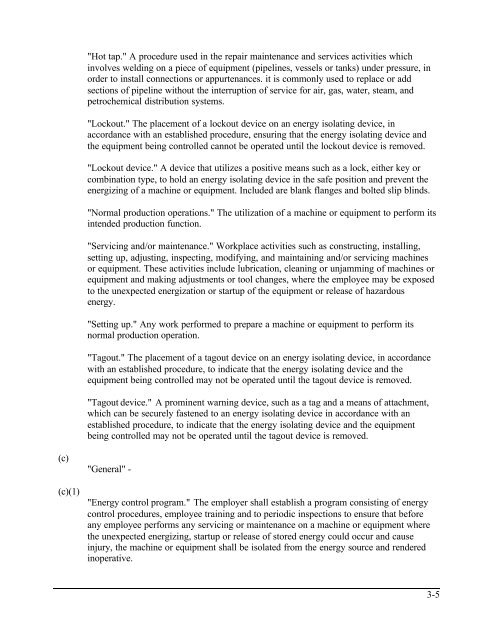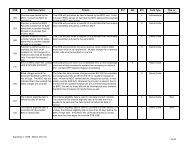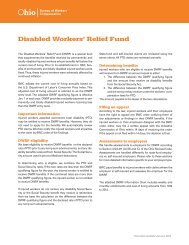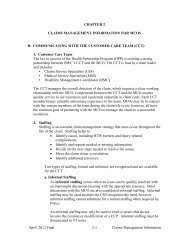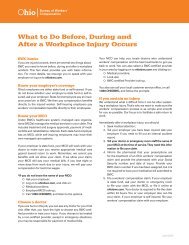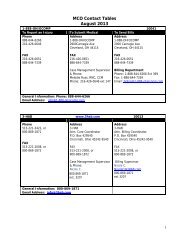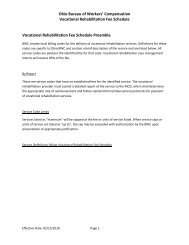Lockout / Tagout - Ohio Bureau of Workers' Compensation
Lockout / Tagout - Ohio Bureau of Workers' Compensation
Lockout / Tagout - Ohio Bureau of Workers' Compensation
You also want an ePaper? Increase the reach of your titles
YUMPU automatically turns print PDFs into web optimized ePapers that Google loves.
"Hot tap." A procedure used in the repair maintenance and services activities which<br />
involves welding on a piece <strong>of</strong> equipment (pipelines, vessels or tanks) under pressure, in<br />
order to install connections or appurtenances. it is commonly used to replace or add<br />
sections <strong>of</strong> pipeline without the interruption <strong>of</strong> service for air, gas, water, steam, and<br />
petrochemical distribution systems.<br />
"<strong>Lockout</strong>." The placement <strong>of</strong> a lockout device on an energy isolating device, in<br />
accordance with an established procedure, ensuring that the energy isolating device and<br />
the equipment being controlled cannot be operated until the lockout device is removed.<br />
"<strong>Lockout</strong> device." A device that utilizes a positive means such as a lock, either key or<br />
combination type, to hold an energy isolating device in the safe position and prevent the<br />
energizing <strong>of</strong> a machine or equipment. Included are blank flanges and bolted slip blinds.<br />
"Normal production operations." The utilization <strong>of</strong> a machine or equipment to perform its<br />
intended production function.<br />
"Servicing and/or maintenance." Workplace activities such as constructing, installing,<br />
setting up, adjusting, inspecting, modifying, and maintaining and/or servicing machines<br />
or equipment. These activities include lubrication, cleaning or unjamming <strong>of</strong> machines or<br />
equipment and making adjustments or tool changes, where the employee may be exposed<br />
to the unexpected energization or startup <strong>of</strong> the equipment or release <strong>of</strong> hazardous<br />
energy.<br />
"Setting up." Any work performed to prepare a machine or equipment to perform its<br />
normal production operation.<br />
"<strong>Tagout</strong>." The placement <strong>of</strong> a tagout device on an energy isolating device, in accordance<br />
with an established procedure, to indicate that the energy isolating device and the<br />
equipment being controlled may not be operated until the tagout device is removed.<br />
"<strong>Tagout</strong> device." A prominent warning device, such as a tag and a means <strong>of</strong> attachment,<br />
which can be securely fastened to an energy isolating device in accordance with an<br />
established procedure, to indicate that the energy isolating device and the equipment<br />
being controlled may not be operated until the tagout device is removed.<br />
(c)<br />
(c)(1)<br />
"General" -<br />
"Energy control program." The employer shall establish a program consisting <strong>of</strong> energy<br />
control procedures, employee training and to periodic inspections to ensure that before<br />
any employee performs any servicing or maintenance on a machine or equipment where<br />
the unexpected energizing, startup or release <strong>of</strong> stored energy could occur and cause<br />
injury, the machine or equipment shall be isolated from the energy source and rendered<br />
inoperative.<br />
3-5


